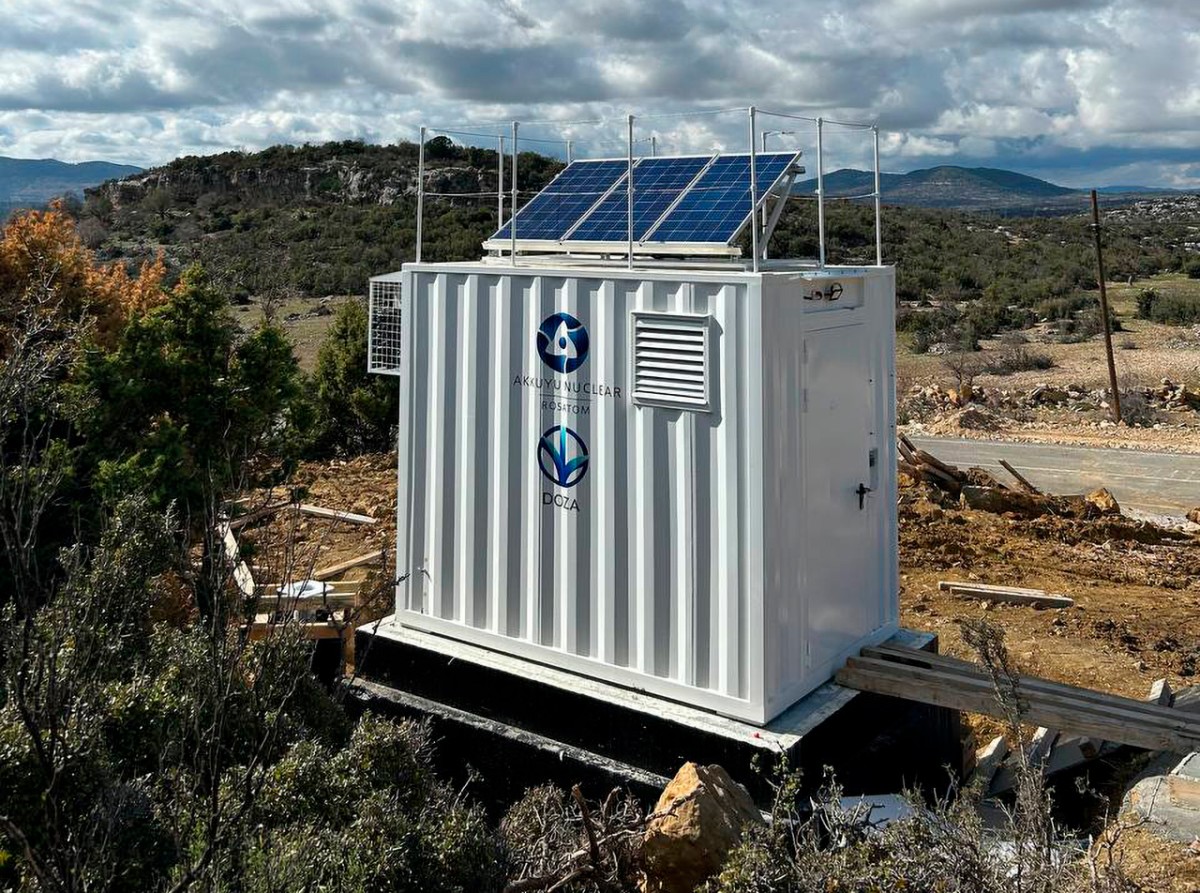 Russia’s SPC Doza is installing the 21st radiation control post within a 20-kilometre zone around the Akkuyu NPP under construction in Turkiye. The Automated Radiation Monitoring System (ARMS) manufactured by SPC Doza will continuously monitor the radiation and meteorological situation in the environmental protection zones and monitoring zones in all operating modes, including design basis and beyond design basis accidents.
Russia’s SPC Doza is installing the 21st radiation control post within a 20-kilometre zone around the Akkuyu NPP under construction in Turkiye. The Automated Radiation Monitoring System (ARMS) manufactured by SPC Doza will continuously monitor the radiation and meteorological situation in the environmental protection zones and monitoring zones in all operating modes, including design basis and beyond design basis accidents.
The control posts are equipped with gamma radiation detection units, radiometric installations, meteorological complexes and uninterruptible power supplies. In addition to stationary posts, the ARMS systems also includes mobile radiological laboratories based on boats or cars.
Meanwhile, Petrozavodskmash (part of Rosatom’s mechanical engineering machine-building division Atomenergomash ) has begun manufacturing the containers for the security system of unit 4 at the Akkuyu NPP. This includes a set of water tanks for the SAOS emergency cooling system. The SAOS is a passive safety system for NPPs comprising four thick-walled hydraulic tanks, each with a volume of 60 cubic metres and weighing about 75 tonnes.
At Petrozavodskmash, cylindrical billets for the water tanks are made from a carbon steel sheet, and the joints are fixed using a weld. Longitudinal welds have already been made on the rims for the hull of the first tank. The second set is being prepared for welding, while the others are at the stage of machining and rolling.
During plant operation, a boronic acid aqueous solution is stored in the SAOS tanks. When the pressure drops in the first circuit below a certain level, this releases an instant automatic flow of liquid into the reactor to cool the core.
Akkuyu, Turkey's first NPP, will eventually host four units of Russian-designed VVER-1200 reactors. The pouring of first concrete for unit 1 took place 2018, for unit 2 in J2020, for unit 3 in 2021, and for unit 4 in 2022. Completion of unit 1 is expected in the third quarter of 2023. Rosatom is constructing the reactors according to a build-own-operate model. To date, the project is fully funded by Russia, but Rosatom has the right to sell a share of up to 49% in the project to other investors.
Image courtesy of Rosatom


